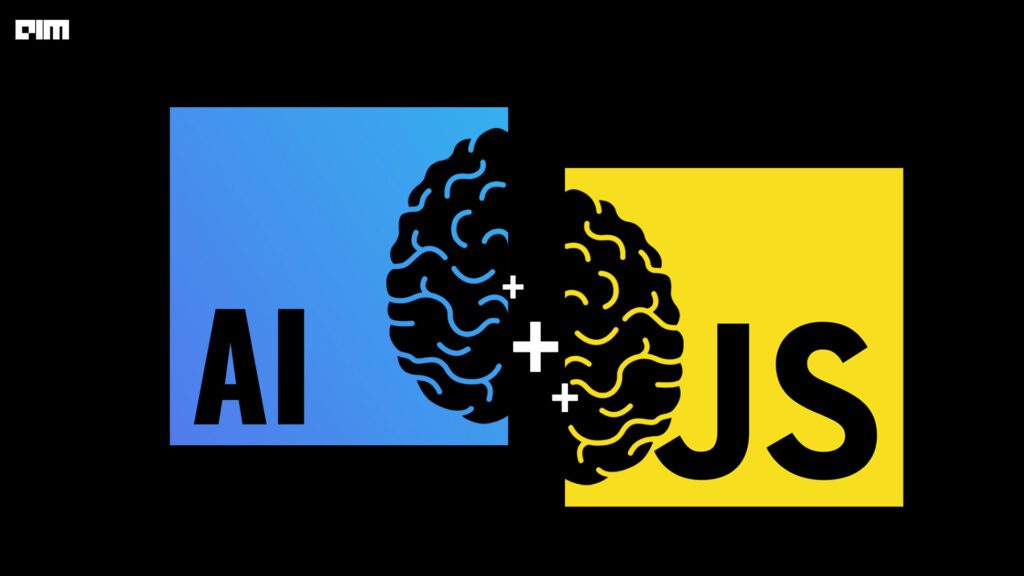Unlocking the Potential of JavaScript in AI Development
In recent months, the landscape of AI application development has undergone some exciting transformations, particularly with the increasing utilization of JavaScript. Andrew Ng, the renowned founder of DeepLearning.AI, recently released a course focusing on building context-aware LLM applications using LangChain.js. This course highlighted how a dominant web development language can be leveraged to create innovative AI tools.
Fast forward a few weeks, two experienced developers, Tejas Kumar and Kevin Ball, launched a new course on building LLM agents in JavaScript, demonstrating different methodologies for harnessing JS alongside libraries like TensorFlow.js. This duo is paving the path for developers eager to tap into the AI potential offered by JavaScript.
The Power of JavaScript in AI
JavaScript is predominantly recognized for web development, but its capabilities extend well into the realm of AI. By running AI models directly within browsers, JavaScript minimizes server strain while enhancing real-time interactivity—a feature particularly valuable for applications that depend on instant feedback such as chatbots and real-time analytics.
JavaScript is the future of AI SaaS.
But why is it the best choice?
Here’s how JavaScript can help you develop AI tools:
——-
I’ve always been a big fan of JavaScript as a programming language, but that doesn’t mean you can’t learn other popular languages like Python, PHP,… pic.twitter.com/1wnjSsSToS
— Haider. (@slow_developer) December 22, 2023
When it comes to utilizing JavaScript for AI, frameworks such as Node.js and Next.js play a pivotal role. These frameworks allow seamless integration with the NPM ecosystem and accessible APIs, facilitating easy access to machine learning libraries and streamlining the development of AI applications.
Enter TensorFlow.js
One of the crown jewels in the integration of AI with JavaScript is TensorFlow.js. This powerful library enables developers to deploy sophisticated AI models directly in web browsers and Node.js environments. From generative models like Variational Autoencoders (VAEs) and Generative Adversarial Networks (GANs) to real-time applications, TensorFlow.js makes it possible to build interactive tools that generate creative outputs such as images and music.
Consider the Deep Convolutional GAN (DCGAN), a model capable of generating incredibly realistic images. With interactive applications, users can tweak latent space vectors, enabling them to generate and manipulate images in real time. Another shining example is Google’s Magenta project, which offers various music generation models via TensorFlow.js, making it easy for developers to create interactive tools for music composition directly in the browser.
In fact, the ease and efficiency offered by TensorFlow.js led LinkedIn to adopt it over Python for backend processes in 2022, illustrating its rapid ascent in the AI landscape.
Enhancing Chatbots with JavaScript
JavaScript isn’t just about interactive applications; it also empowers the development of intelligent chatbots. Utilizing natural language processing capabilities, chatbots built with JavaScript can grasp user intent more effectively. Developer Shoaib F emphasizes the language’s utility in this area, stating that JavaScript enables the creation of chatbots that learn and adapt through machine learning, thus enhancing their response quality over time.
These chatbots are instrumental for businesses, assisting with customer support, gathering feedback, and leading generation. JavaScript provides the interface for these chatbots, ensuring smooth user interaction with AI features integrated right into web applications. Its scalable nature perfectly suits the demands of processing large data volumes in real-time.
JavaScript vs. Python in AI Development
Despite its advantages, JavaScript is unlikely to replace Python as the primary language for AI development any time soon. Python remains the go-to choice for AI and machine learning tasks due to its rich ecosystem of libraries and frameworks, such as Pandas, TensorFlow, and Keras. As one Reddit user pointed out, much of AI and ML work is exploratory—loading data, manipulating datasets, and evaluating models—and that’s where Python truly excels.
JavaScript’s foray into AI development is still in its nascent stages. However, as interest grows, we can expect more courses, libraries, and support dedicated to JavaScript-centric AI applications, making it an impressive option for developers familiar with the language. Additionally, TypeScript—essentially a superset of JavaScript—can also serve as a robust tool for those venturing into AI development.
Conclusion
JavaScript is carving out a significant niche in the AI realm, and the combination of its versatility and libraries like TensorFlow.js is opening new doors for developers. While it cannot overshadow Python in the AI landscape, it offers unique capabilities that are especially beneficial for web-based applications. Whether you’re a seasoned developer or just starting, exploring JavaScript for AI could be a game-changer in your toolset.
The AI Buzz Hub team is excited to see where these breakthroughs take us. Want to stay in the loop on all things AI? Subscribe to our newsletter or share this article with your fellow enthusiasts.




